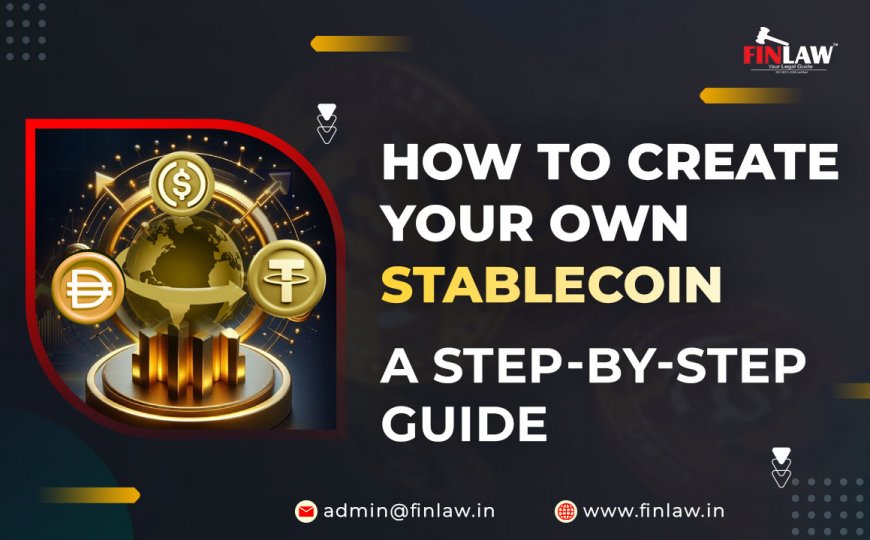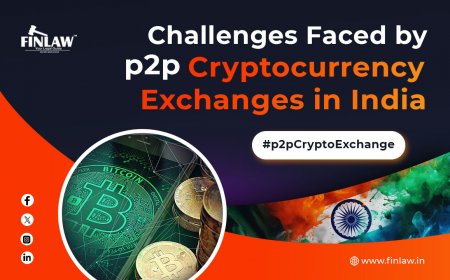How to Create Your Own Stablecoin: A Step-by-Step Guide
Learn how to create your own stablecoin with this step-by-step guide. Explore models, costs, compliance, and India-specific insights.

Stablecoins have emerged as one of the most practical applications of blockchain technology. They combine the security and programmability of crypto with the stability of fiat money. For entrepreneurs, fintech innovators, and blockchain developers, the ability to create your own stablecoin can unlock new opportunities in payments, DeFi, remittances, and digital assets.
This guide provides a detailed roadmap to create stablecoin solutions, covering the economic model, technical architecture, compliance requirements, and challenges. While the article has a global perspective, it also highlights the unique considerations for launching a stablecoin in India.
What is a Stablecoin?
A stablecoin is a digital token pegged to a stable asset, usually a fiat currency like the US Dollar (USD) or Indian Rupee (INR). Unlike traditional cryptocurrencies such as Bitcoin or Ethereum, which are volatile, stablecoins are designed to maintain a predictable value.
Categories of Stablecoins:
-
Fiat-backed stablecoins – Backed by 1:1 fiat reserves held in a bank (e.g., USDC, Tether).
-
Crypto-backed stablecoins – Backed by other cryptocurrencies and usually over-collateralized (e.g., DAI).
-
Algorithmic stablecoins – Use supply-demand algorithms to maintain stability without collateral (high-risk).
-
Commodity-backed stablecoins – Pegged to assets like gold, oil, or real estate (increasingly popular in India).
For those aiming to create your own stablecoin, choosing the right model is the most critical decision.
Why Create Your Own Stablecoin?
The ability to create stablecoin systems is not just for large exchanges or global institutions. Entrepreneurs, startups, and enterprises in India can also benefit.
Key reasons include:
-
Cross-border payments: Reduce high remittance fees in India (currently among the highest globally).
-
DeFi applications: Enable lending, borrowing, and yield farming without volatility risk.
-
Corporate ecosystems: Companies can issue private stablecoins for loyalty programs or B2B settlements.
-
E-commerce and micropayments: Provide a low-cost, stable medium of exchange.
-
Tokenization of assets: Gold, real estate, and carbon credits can be tokenized using stablecoins.
Step-by-Step Guide to Create Your Own Stablecoin
Step 1: Select the Type and Peg
Decide whether your stablecoin will be fiat-backed, crypto-backed, algorithmic, or commodity-backed. For India, commodity-backed and USD-pegged models are often more realistic due to regulatory restrictions around INR-backed coins.
Step 2: Regulatory Considerations in India
-
INR-pegged stablecoins are not currently authorized by the Reserve Bank of India (RBI).
-
The Financial Intelligence Unit (FIU-IND) requires Virtual Asset Service Providers (VASPs) to register and comply with AML/KYC rules.
-
Future laws under India’s Digital India Act or amendments to the RBI Act may further regulate stablecoins.
If you intend to create stablecoin projects in India, legal compliance should be the first step.
Step 3: Define the Economic Model
-
Collateral ratio (100% backed, over-collateralized, or algorithmic).
-
Minting/burning logic.
-
Redemption process for users.
-
Governance: centralized (company) vs. decentralized (DAO).
Step 4: Choose a Blockchain Network
Popular choices for building stablecoins include:
-
Ethereum (ERC-20 standard): Most trusted ecosystem, widely adopted.
-
Polygon: Cheaper and faster, widely used in India.
-
Binance Smart Chain (BSC): Cost-effective for large-scale transactions.
-
Solana: High throughput, suitable for real-time payments.
Step 5: Develop Smart Contracts
Build contracts for:
-
Token issuance (minting and burning).
-
Reserve management.
-
Oracles for price stability.
-
Governance and upgrade mechanisms.
Frameworks like OpenZeppelin help reduce security risks.
Step 6: Integrate Oracles
Price feeds (e.g., from Chainlink) are essential for maintaining the peg. Ensure redundancy and fallback systems to prevent manipulation.
Step 7: Custody and Reserve Management
-
Partner with licensed custodians or banks.
-
Maintain segregated reserve accounts.
-
Conduct third-party audits to prove collateralization.
Step 8: Security Audits
Stablecoin failures often stem from smart contract bugs. Multiple independent audits and bug bounties are a must.
Step 9: Compliance Framework
-
Onboard users via KYC.
-
Monitor suspicious activity under AML laws.
-
Follow FATF travel rule requirements for cross-border transfers.
Step 10: Launch and Provide Liquidity
-
Bootstrap liquidity on decentralized exchanges.
-
Negotiate listings with centralized exchanges.
-
Integrate merchant adoption tools (wallets, APIs, SDKs).
Step 11: Ongoing Governance
Post-launch operations include maintaining reserves, governance voting, continuous audits, and providing user support.
How Much Does it Cost to Create Stablecoin?
The cost of creating your own stablecoin depends on the scope:
-
Basic ERC-20 token: $5,000–$20,000 (development + testnet).
-
Fully compliant fiat-backed stablecoin: $500,000–$2 million (banking, legal, audits, liquidity).
-
Enterprise-grade stablecoin ecosystem: Can exceed $10 million depending on jurisdiction and adoption strategy.
For Indian entrepreneurs, legal and compliance expenses may be the largest cost component.
Challenges in Creating a Stablecoin
While anyone can technically deploy a token, building a trusted stablecoin is difficult.
-
Regulatory risk: India is cautious toward private stablecoins.
-
Banking hurdles: Securing a banking partner for fiat reserves can be challenging.
-
Liquidity: Without liquidity pools and adoption, the coin has little utility.
-
Security threats: Smart contract exploits or oracle manipulation can destabilize the coin.
-
User trust: Transparency in reserves and audits is critical.
Future of Stablecoins in India
Despite restrictions, India has one of the largest crypto user bases globally. With RBI exploring cross-border payments via CBDCs, stablecoins may eventually find regulatory clarity.
Potential opportunities include:
-
Cross-border trade settlements in INR.
-
Gold-backed stablecoins (popular among Indian investors).
-
DeFi lending platforms tailored for Indian markets.
-
Integration with UPI for seamless payments.
For startups, the key is to create stablecoin designs that align with India’s regulatory priorities while keeping an eye on international markets.
FAQs
Q1. How can I create my own stablecoin?
You can create your own stablecoin by choosing a collateral model, developing smart contracts, integrating oracles, securing reserves, conducting audits, and ensuring regulatory compliance.
Q2. Is it legal to create stablecoin in India?
At present, INR-pegged private stablecoins are not approved in India. However, companies can explore USD or commodity-backed stablecoins, provided they comply with AML/KYC requirements.
Q3. What blockchain is best to create stablecoin?
Ethereum is the most popular choice due to its ecosystem. However, Polygon, BSC, and Solana are cost-effective alternatives for large-scale usage.
Q4. How much does it cost to create stablecoin?
The cost ranges from a few thousand dollars for a basic token to millions for a fully compliant, audited, and widely adopted stablecoin ecosystem.
Conclusion
To create your own stablecoin, you must combine technical innovation with regulatory foresight. While the coding process of launching a token is relatively straightforward, building a trustworthy and legally compliant stablecoin is complex and resource-intensive.
For India, regulatory restrictions add another layer of challenge, but opportunities exist in USD-pegged, gold-backed, and cross-border payment-focused stablecoins. Those who succeed in balancing technology, compliance, and trust will be at the forefront of digital finance in India’s rapidly evolving crypto economy.
What's Your Reaction?



















